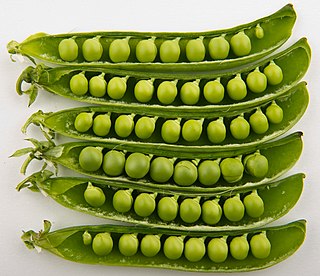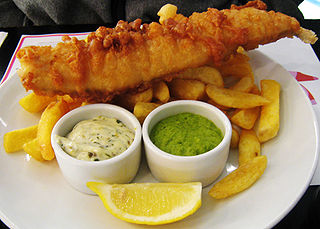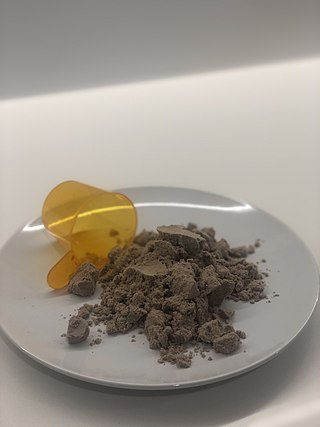
A bean is the seed of several plants in the family Fabaceae, which are used as vegetables for human or animal food. They can be cooked in many different ways, including boiling, frying, and baking, and are used in many traditional dishes throughout the world.

The pea is most commonly the small spherical seed or the seed-pod of the flowering plant species Pisum sativum. Each pod contains several peas, which can be green or yellow. Botanically, pea pods are fruit, since they contain seeds and develop from the ovary of a (pea) flower. The name is also used to describe other edible seeds from the Fabaceae such as the pigeon pea, the cowpea, and the seeds from several species of Lathyrus.

The radish is an edible root vegetable of the family Brassicaceae that was domesticated in Asia prior to Roman times.

A legume is a plant in the family Fabaceae, or the fruit or seed of such a plant. When used as a dry grain, the seed is also called a pulse. Legumes are grown agriculturally, primarily for human consumption, for livestock forage and silage, and as soil-enhancing green manure. Well-known legumes include beans, soybeans, chickpeas, peanuts, lentils, lupins, grass peas, mesquite, carob, tamarind, alfalfa, and clover. Legumes produce a botanically unique type of fruit – a simple dry fruit that develops from a simple carpel and usually dehisces on two sides.

The jackfruit, also known as the jack tree or langka, is a species of tree in the fig, mulberry, and breadfruit family (Moraceae).

Cress, sometimes referred to as garden cress to distinguish it from similar plants also referred to as cress, is a rather fast-growing, edible herb.

Mushy peas are dried marrowfat peas which are first soaked overnight in water with sodium bicarbonate, and then rinsed in fresh water, after which the peas are gathered in a saucepan, covered with water, and brought to a boil, and then simmered until the peas are softened. The mush is seasoned with salt and pepper.
Sativa, sativus, and sativum are Latin botanical adjectives meaning cultivated. It is often associated botanically with plants that promote good health and used to designate certain seed-grown domestic crops.

Split peas are an agricultural or culinary preparation consisting of the dried, peeled and split seeds of Pisum sativum, the pea.
Black peas, also called parched peas or dapple peas, are cooked purple-podded peas. They are a traditional Lancashire dish usually served with lashings of malt vinegar, and traditionally on or around Bonfire Night. The dish is popular in Bury, Preston, Rochdale, Oldham, Wigan, Bolton, Atherton, Tyldesley Leigh and Heywood. The dried peas are soaked overnight and simmered to produce a type of mushy pea. Parching is a now-defunct term for long slow boiling.

Princes Group is an international food and drink group involved in the manufacture, import and distribution of branded and customer own-brand products. Founded in 1880 and headquartered in the UK, since 1989 it has been owned by the Japanese conglomerate Mitsubishi Corporation.

The snow pea is an edible-pod pea with flat pods and thin pod walls. It is eaten whole, with both the seeds and the pod, while still unripened.

4-Chloroindole-3-acetic acid (4-Cl-IAA) is an organic compound that functions as a plant hormone.

A grain is a small, hard, dry fruit (caryopsis) – with or without an attached hull layer – harvested for human or animal consumption. A grain crop is a grain-producing plant. The two main types of commercial grain crops are cereals and legumes.

Pea protein is a food product and protein supplement derived and extracted from yellow and green split peas, Pisum sativum. It can be used as a dietary supplement to increase an individual's protein or other nutrient intake, or as a substitute for other food products. As a powder, it is used as an ingredient in food manufacturing, such as a thickener, foaming agent, or an emulsifier.
A pea is a small spherical seed or the seed-pod of various plants commonly used as a source of food, particularly Pisum sativum.

In Indian cuisine, dal, paruppu or pappu, are dried, split pulses that do not require soaking before cooking. India is the largest producer of pulses in the world. The term is also used for various soups prepared from these pulses. These pulses are among the most important staple foods in South Asian countries, and form an important part of the cuisines of the Indian subcontinent.

Pea soup or split pea soup is soup made typically from dried peas, such as the split pea. It is, with variations, a part of the cuisine of many cultures. It is most often greyish-green or yellow in color depending on the regional variety of peas used; all are cultivars of Pisum sativum.

Grey peas is a popular Latvian cuisine snack made from large grey peas. It is a traditional Christmas dish in Latvia.
















